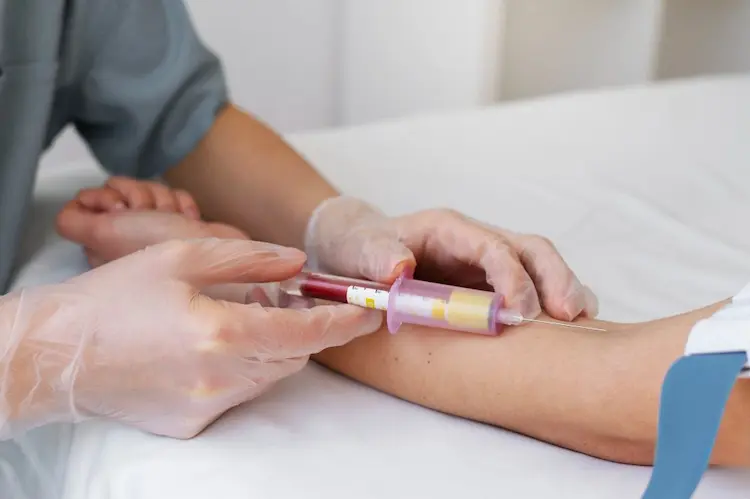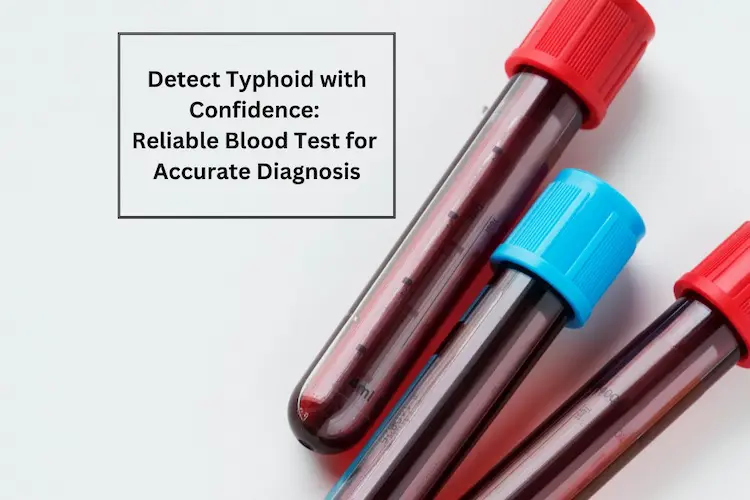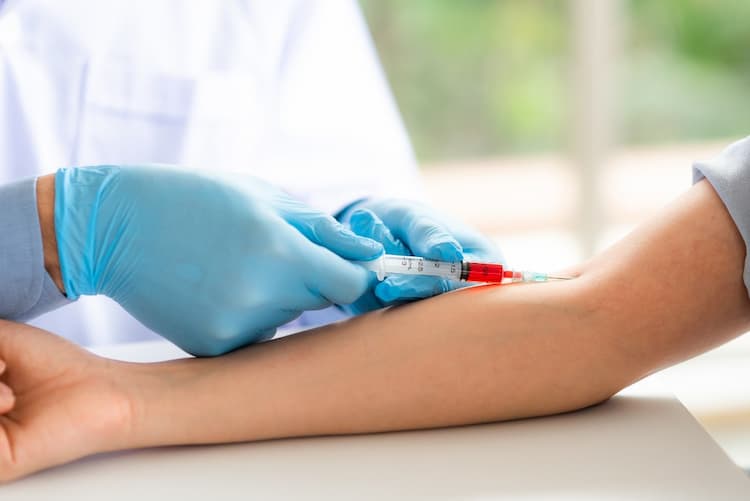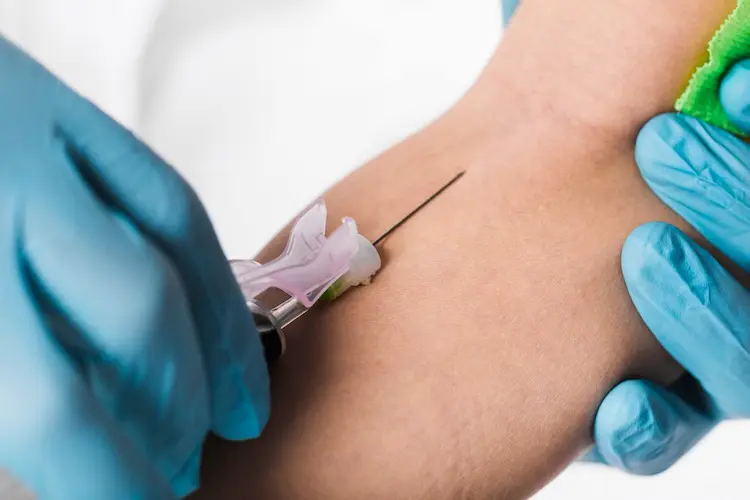RDW (Red Cell Distribution Width) Test: normal range, what does low and high RDW indicate, cost in india

Medically Reviewed By
Dr. Ragiinii Sharma
Written By Dr Divya Rohra
on Apr 18, 2022
Last Edit Made By Dr Divya Rohra
on Mar 18, 2024
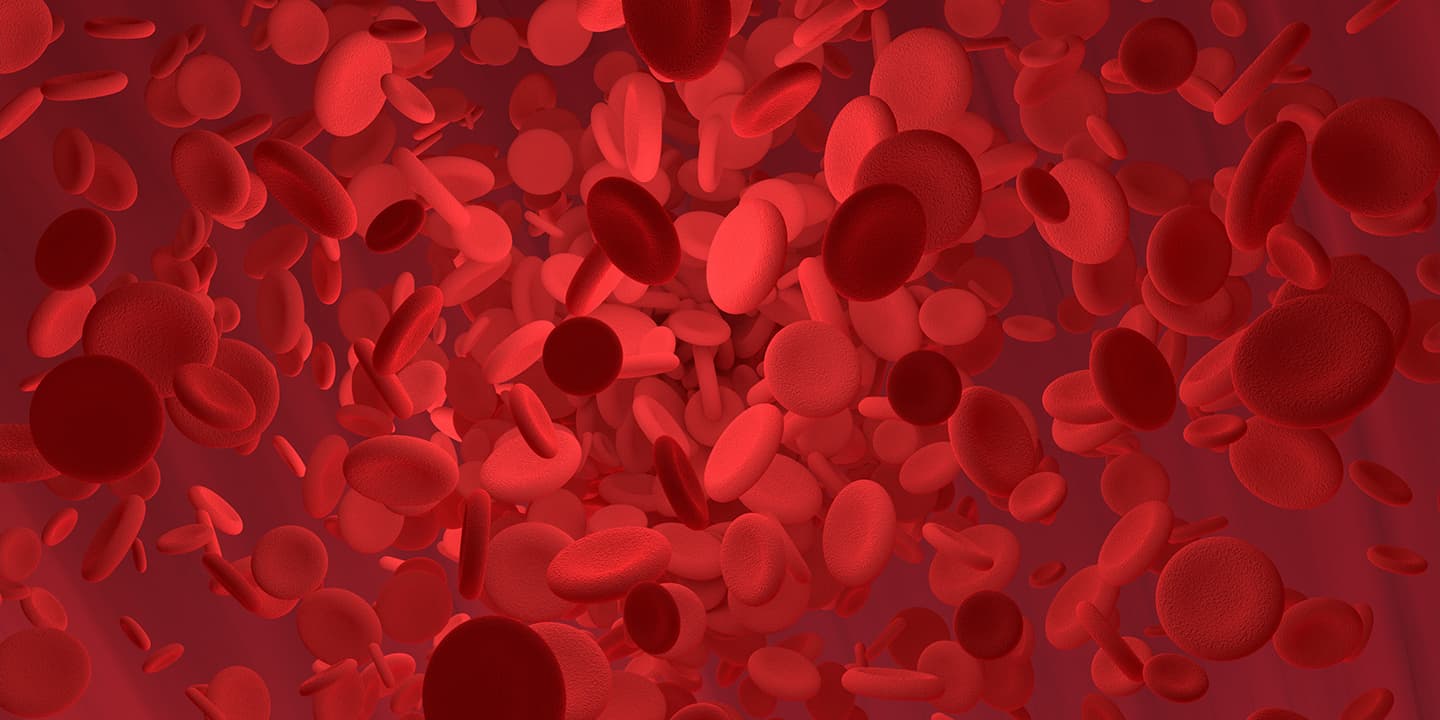
Formed in the bone marrow of the long bone, red blood cells or RBCs play a crucial role in our body. It is a critical element in our blood and is responsible for transporting oxygen to every tissue in the body. They also carry the carbon dioxide back to the lungs to be expelled out of the system.
The Red Cell Distribution Width or RDW test analyzes the shapes and sizes of an individual’s red blood cells in the body. The test's primary objective is to confirm a diagnosis of anemia and ascertain its type affecting the patient.
Signs like dizziness, fatigue, and numbness are often signs of anemia, which could be due to poor health or production of the red blood cells in the body. Getting an RDW test can clarify your confusion and help you get an understanding of what’s wrong. Don’t delay testing any further.
The RDW test is often prescribed as part of the Complete Blood Count (CBC) test. This article will explore more about the test and its significance.
In this Article
What is the RDW Test?
The RDW blood test analyzes and measures the size and shape of the red blood cells in the patient’s blood sample. It compares the largest and the smallest red blood cells collected in the sample.
Normal red blood cells, known as erythrocytes, have a staple disk shape, measuring between 6.2 to 8.2 micrometers in diameter.
If your RDW test results are high, it indicates variance in the shape and size of the red blood cells in the sample, which shows potent abnormalities in the body.
Why do I need an RDW Blood test?
The RDW CV blood test is predominantly prescribed to confirm a diagnosis for anemia, specifically sickle cell anemia.
Besides anemia, your doctor might prescribe an RDW test to confirm any of the following diseases, including:
- Diabetes
- Liver disease
- Heart disease
- Cancer
- Thalassemia
If you are concerned about the symptoms that indicate the need for an RDW blood test, they include:
- Dizziness
- Weakness and fatigue
- Symptoms of anemia
- Low iron levels
- Genetic predisposition to blood disorders
- Chronic illnesses like HIV or Crohn’s disease
- Excessive blood loss after an injury or trauma
Depending on the symptoms, your doctor will prescribe a complete blood count test and then ascertain further complications based on the reports.
How do I prepare for the test?
As we mentioned before, the RDW blood test is done as part of the complete blood count test. So, for better accuracy, your doctor or lab technician will advise you to fast for at least 8 hours before the blood sample is drawn.
How do I interpret the RDW Blood test reports?
The RDW blood test reports generally take between 12-and 24 hours.
The RDW SD normal range is 12.2 to 16.1% and 11.8 to 14.5 in females and males.
Generally, the RDW blood test's high levels indicate possibilities of anemia, nutrient deficiency, or even an infection.
However, the RDW blood test reports independently cannot ascertain a diagnosis. Sometimes, even patients with normal range are later diagnosed with underlying disorders. For a more thorough diagnosis, your doctor will prescribe further testing, including mean corpuscular volume (MCV), etc.
Interpreting high results
If your RDW test results are abnormally high, they indicate a nutrient deficiency, including folate, iron, or Vitamin B12.
Depending on the results, your doctor might diagnose you with microcytic or macrocytic anemia, where the red blood cells are abnormally smaller or larger than normal.
For a more accurate diagnosis, the doctor compares the RDW test results with the MCV test results to find the red blood cell volume in the body.
Interpreting low results
Unlike high RDW levels, low test results aren’t associated with any complications in the body. So, if your RDW levels are lower than usual, there’s nothing much you’d have to worry about.
Besides the elevated or low levels, sometimes normal RDW results with higher MCV levels indicate aplastic anemia in the patient. Aplastic anemia is a blood disorder that stunts the production of red blood cells from the bone marrow.
What are some Conditions Linked with High RDW Levels?
Besides anemia, a high RDW level is indicative of several other underlying disorders, including:
- Autoimmune diseases like lupus, rheumatoid arthritis, etc.
- Pneumonia
- Alcohol abuse
- Kidney disease
- Chronic liver disease
- Stroke
- Vulvular disease
- Blood disorder
- Congestive heart failure
Sometimes, a few non-disease factors can also alter the average RDW test results. Blood transfusions are often a prevalent contributing factor.
How to Manage High RDW Levels?
Unless your RDW levels are due to a chronic illness or hereditary condition, lifestyle and dietary changes can proactively help lower the levels.
If you are at risk of having high RDW levels, here’s what you can do:
Focus on your diet – Often, nutrient deficiency can lead to low RDW levels. So, a potent deficiency of iron, folate, and Vitamin B12 can trigger the change in shape and size of the RBCs. In that case, supplementing your diet with the proper nutrients is crucial.
Quit smoking and alcohol – Studies suggest that people who smoke have higher tendencies of having elevated RDW levels. Also, alcohol can inadvertently damage the RBCs in the bloodstream. So, avoid both of them.
Get quality sleep – Disrupted sleeping patterns can significantly lower the RDW levels, as reported in a study with 17,000+ participants.
Get active – It is scientifically proven that people that lead a lazy and sedentary lifestyle have higher RDW levels. So, instead, focus on getting active and exercising to lower the levels.
Conclusion
High RDW levels can be due to a mound of reasons. So, before panicking and getting anxious, we’d recommend that you get a comprehensive answer from your doctor. Ideally, with timely and proper medical interventions, managing the RDW levels is possible with timely and appropriate medical interventions. If you have any associated concerns, discuss them with your healthcare professional.
